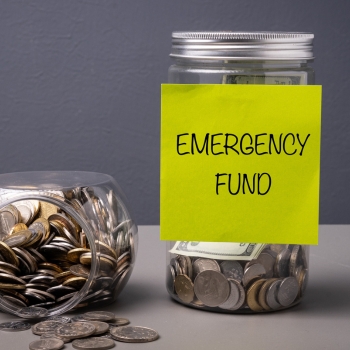Emergency Funds. How Much Should You Really Have Saved?

The State of Savings in Australia Today
In a time of rising living costs and economic uncertainty, not having enough in reserve can lead to real hardship. But what is a realistic savings goal, and what does the average Australian have saved?
How much do Australians really have saved?
- According to Finder’s mid‑2025 Consumer Sentiment Tracker, the average Australian bank savings balance is about $47,624, but nearly 43%, almost half of the population, have less than $1,000 in savings.
- Almost one in five people (18 per cent) say they have no savings at all.
- For those with under $1,000 in savings, the average bank balance is just $215.
What's typical vs average?
- Westpac data from January 2025 shows average savings by age that vary widely—for example, Gen Z around $13,069, while Boomers average more than $87,000.
- Meanwhile, Money.com.au reports NSW residents have an average of $58,983 saved, significantly above the national average
- Australia’s household savings ratio climbed to 5.2% in Q1 2025, up from 3.9% in Q4 2024. A sign many Aussies are trying consciously building their savings.
How Much Should You Save?
Three to Six Months is the Goal
It is widely recommend having at least three months’ worth of living expenses saved, expanding to six months if possible for more security. If combined slope of cost-of-living rises, job loss, or unexpected expenses hits, that buffer can cover rent/mortgage, utilities, groceries, and urgent medical or repair bills.
This saving amount will also help you
- Avoid debt traps: Covering sudden bills with credit cards or loans can carry high interest.
- Reduce stress: Knowing you have a buffer can provide peace of mind.
- Maintain financial flexibility: Funds accessible in easy-to-access accounts let you cope without disrupting investments.
Smart Ways to Build Your Fund
- Start small—even $10 a week builds momentum, better than doing nothing
- Automate transfers to a high-interest savings or offset account each payday.
- Use windfalls wisely – tax refunds or bonuses can be allocated to your emergency fund.
- Track spending to free up small amounts each month. Canstar data shows Australians are saving an average of $558 per month by tracking spending.
Where to Hold Your Emergency Fund
Choose accounts that maintain liquidity and reasonable return, like:
- High-interest savings accounts
- Term deposits (short term)
- Mortgage offset accounts (if you have a home loan)
Avoid locking funds into investments with market risk or limited access.
How Cashflow Financial Can Help
At Cashflow Financial, we specialise in helping clients create stability and financial resilience through smart budgeting and cash flow planning.
We can assist you with:
- Calculating your ideal emergency fund based on your lifestyle
- Setting up automated savings strategies
- Evaluating the best account types to maximise interest while keeping cash accessible
- Integrating your emergency fund plan into broader goals like debt reduction, investment, or super contributions
Final Word: Your Safety Net Starts Now
The reality is stark: nearly half of Australians are one nagging health bill or overdue repair away from financial stress. Yet so many could reach a secure baseline with just three months of expenses saved.
If you’re unsure where to begin, or simply need support making a plan that works, let’s chat. Cashflow Financial can help you build a safety net that fits your life and empowers your future.